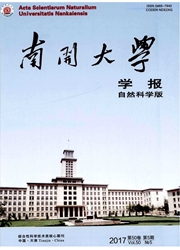

 中文摘要:
中文摘要:
通过向水体添加不同浓度的汞(Hg^2+),观察其对中华绒螯蟹幼蟹(2.01±0.16)g的毒性影响.结果表明,Hg^2+对其24,48,72,96h的半致死浓度(LC50)分别为0.5428,0.4716,0.4332和0.3423mg/L.中华绒螯蟹幼蟹在0,0.01,0.05,0.10,0.20,0.30mg/L的Hg^2+条件下饲养40d后,各浓度组幼蟹存活率分别为96.67%,86.67%,73.33%,63.33%,56.67%,43.33%;增重率和蜕皮率随着Hg^2+浓度的升高而降低.可见水体中的Hg^2+能够抑制中华绒螯蟹的生长和蜕皮,高浓度的Hg^2+甚至会造成幼蟹的死亡.根据Hg^2+对中华绒螯蟹的毒性作用确定水体中汞的最大允许量为0.0342mg/L.
 英文摘要:
英文摘要:
The toxicity of mercury chloride to juvenile Eriocheir sinensis over the short-term (24, 48, 72, 96 h) and during continuous exposure 40 was investigated. The result of acute assay showed that the median lethal concentration of mercury chloride to juvenile E. sinensis was 0. 542 8, 0. 471 6, 0. 433 2, 0. 342 3 mg/L at 24, 48, 72, 96 hour respectively. The survival rates of juvenile E. sinensis exposed to 0 (control), 0. 01, 0. 05, 0.10, 0.20, 0.30 mg/L mercury chloride after 40 days were 96.67%, 86. 67%, 73.33%, 63.33%, 56.67%, 43.33%. The weight gain of crabs exposed to 0. 05 mg/L was significantly lower than those 0.01 mg/L mercury chloride and the control solution. With the mercury concentrations increased, the number of molting crabs and the molting rate was decreased. The maximum permissible concentration was 0. 034 2 mg/L. The results of the study suggest that level of mercury in the aquatic environment may have a significant effect on the juvenile E. sinensis.
 同期刊论文项目
同期刊论文项目
 同项目期刊论文
同项目期刊论文
 期刊信息
期刊信息
